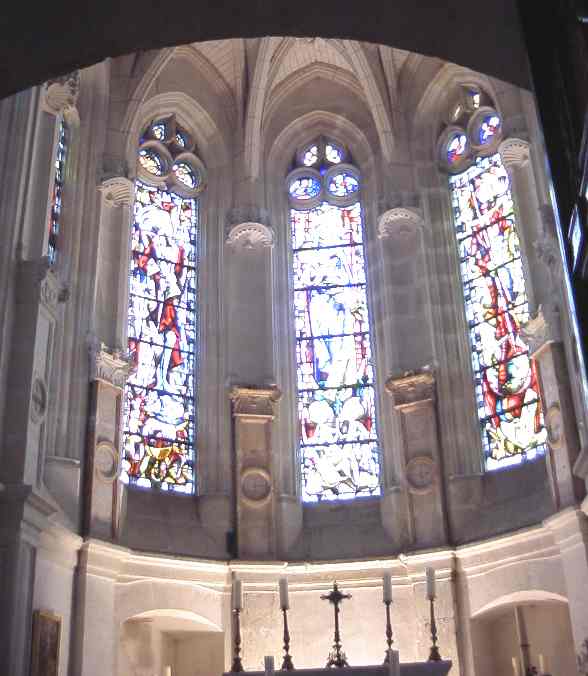
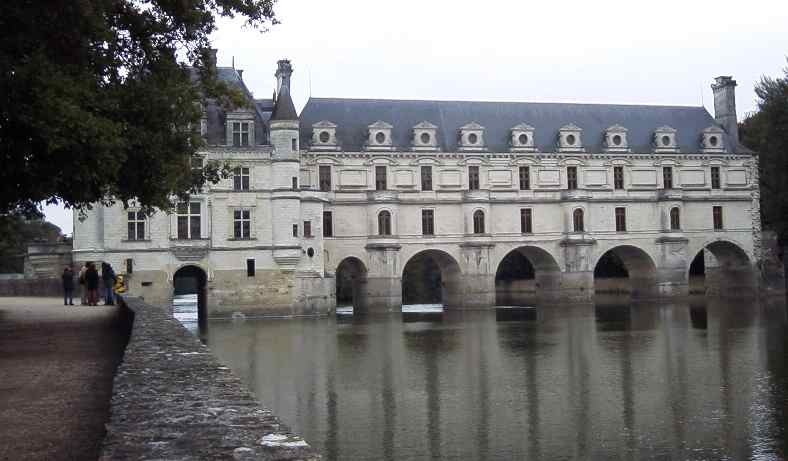 A bridge over the non-troubled
waters of the Cher
A bridge over the non-troubled
waters of the Cher
We woke up in our quaint inn in Chenonceau (a town all of a block long) and walked over to the Chateau. This turned out to be my personal favorite because of its bold architecture and beautiful gardens. Walking in the front door, we went by the chapel which was closed for alterations but we snuck this picture anyway:

Chenonceau was involved in many intrigues over the years and had two start tenants who pretty much had no use for each other. It started as a chateau built right on arches in the river Cher. It was built by the wife of the finance minister of Normandy starting in 1513 but was later confiscated by the king, Francois I a generation later. Here's a fancy fireplace with his emblem (the salamander) on the left and that of his queen (the ermine) on the right. (The Loire Valley is filled with chateaux with his emblem).
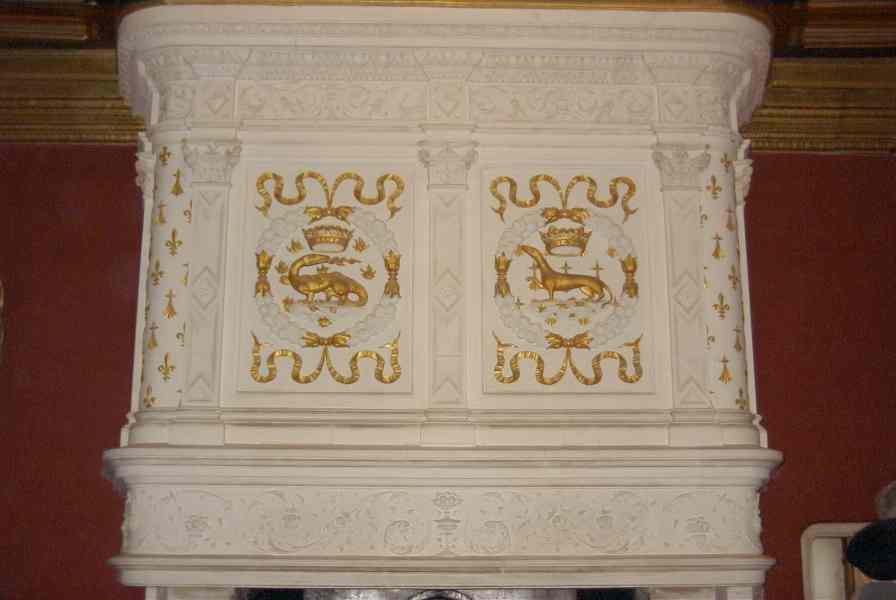
Francois assigned a "noble" woman to be his heir's governess; After all, she was almost 20 years older than the future Henri II. Gradually Diane De Poitiers became the Henri's mistress as well and finagled ownership of the house. While there, she built the first (and more beautiful garden) which we see below:
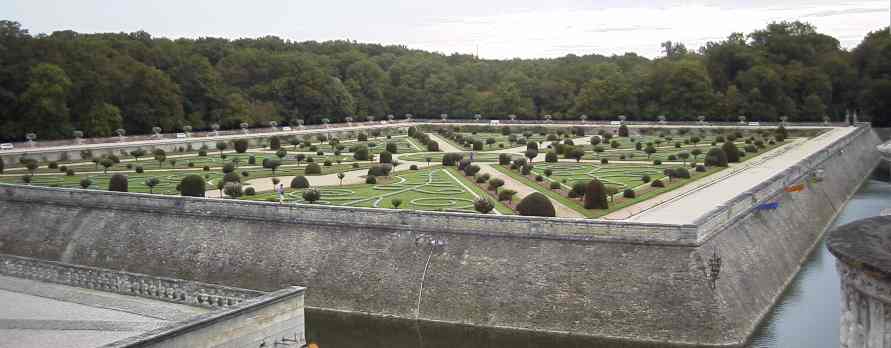
This was not the original planting as this garden was heavily damaged during a severe flood in 1940.
The chateau also has many renaissance fireplaces. Here's one called the Diane De Poitiers fireplace even though it contains the picture of her arch rival, Catherine De Medici her queen:
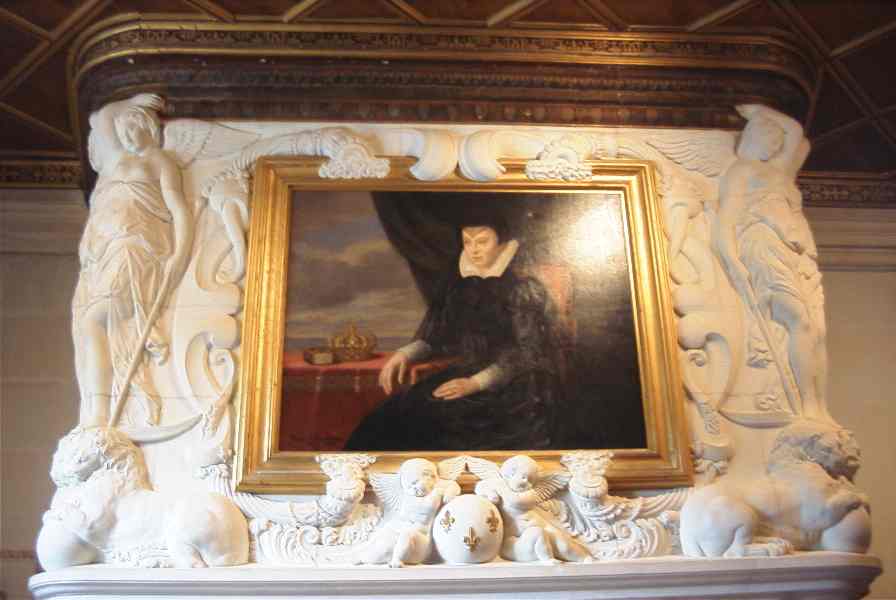
Henry II died relatively young after being wounded in the eye by a spear during a tournament. and his queen, Catherine De Medici (who also was the mother of three kings herself) kicked Diane out of Chenonceau and started remodeling. Here's her garden that she created in an attempt to up-womanship Diane:
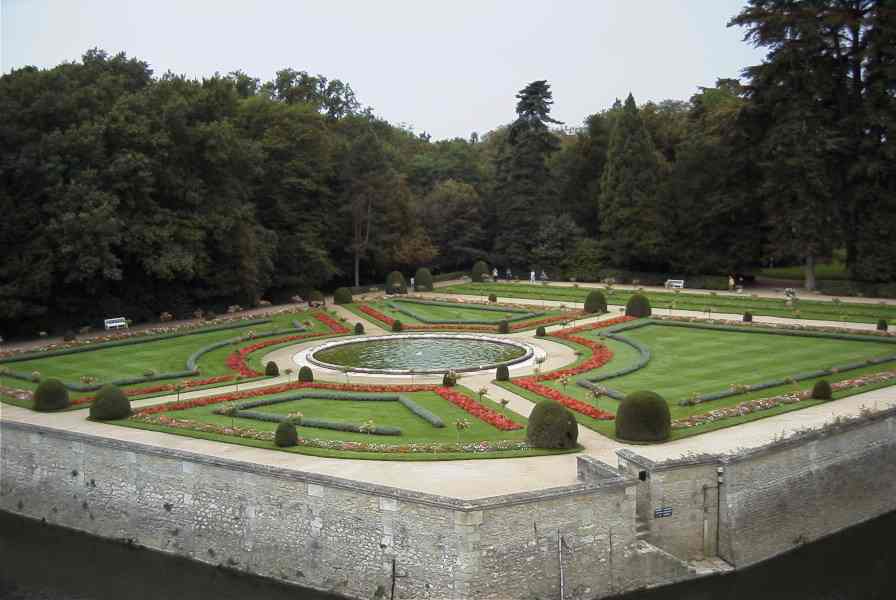
Nice try, Catherine, but not good enough.
Catherine would also stage the ultimate party: Her best known party was attended by three future queens in 1577. Besides the expected splendor, Catherine had her retinue of young woman (about 200 who accompanied her most places) dress as either men or semi-nude. In turn, she had the men dress as woman in honor of Henry III who was into that sort of thing anyway. Let's not go there.
Instead let's go to the bridge over the Cher river which Catherine had expanded in 1576 into a two story Gallery since the castle lacked a grand reception hall. Unfortunately, as spectacular as the gallery is on the outside, it is not integrated too well with the rest of the chateau as one has to walk through some rather winding and small rooms to get to its grand expanse. The view of the outside of the gallery is, of course, at the top of this page. Here's the inside of the first floor. Keep in mind that you are looking across a river as well.
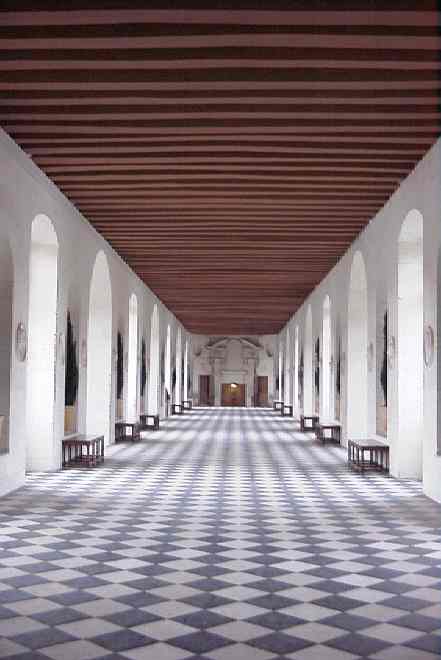
This room had additional historical significance in both world wars. In the first world war, it served as a hospital for wounded soldiers, holding over 2000 of them at one time or another. During the second world war, the Cher river divided occupied France from free France so you could literally walk across this room from Nazi domination to allied land.
Around the time of the French Revolution when so many of the beautiful places in France were being destroyed or at least gutted by the peasants, Louise Dupin was the mistress of Chenonceau. She ran a remarkable salon or the day's top French writers, actors (she was a famous actress herself), and painters. Because of her popularity, Chenonceau was spared the trauma of the Revolution.
We next went to the famous chateau of Blois. We'll finish putting that up on the web when we return from Sicily.
Where do you want to go today? Here's a few choices:
